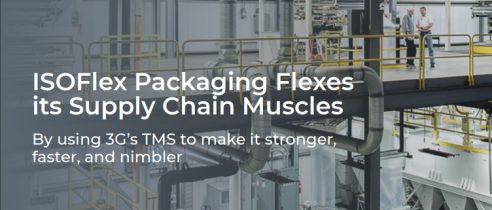Blog
More Certainty with Fewer Tools
Pairing your ERP with a single transportation u0026 shipping software suite

The ERP has become emblematic of the trend towards consolidating a greater number of operations around a smaller number of cloud-based software platforms. However, this trend still eludes certain operations, like shipping, that are spread across multiple systems. Systems that integrate poorly with modern ERPs (and not at all with one another) decemate accuracy and efficiency and create additional uncertainty (on top of what manufacturers, distributors, and retailers already face).
Many facets of shipping may seem disconnected from an executional standpoint, since they may rely on different teams and technology (for now). For example, warehouse pack-and-ship workflows seem unrelated to freight load and route planning, but that’s only because they’ve never been properly connected. In fact, using a single interface to handle both would likely have companies using different modes, carriers, and services – but spending less time, money, and customer goodwill to do so. Those who do, however, will see three main benefits:
- Improved adaptability – confront uncertainty as it unfolds
- Reconfigure systems without replacing them – never hamper growth
- Setup for success – integrate with specialized point solutions
Improved adaptability. Markets can be seasonal, cyclical, or altogether unpredictable. Those constant changes dictate the type of goods you will be selling, who will be buying them, and how they will be delivered. These fluctuations vary in their degree, interval, and predictability. Oscillating between shipping small parcels by the thousands and freight pallets by the dozens is difficult enough for the warehouse teams, and is compounded (or even rendered impossible) when systems don’t offer sufficient flexibility.
Putting parcel aside, even freight markets require different approaches to efficiently move goods. For example, in a “capacity crunch” it’s great to have negotiated LTL rates locked in. However, when things pivot, and they will, the truckload spot market can present a superior value. However, while manufacturers, distributors, and retailers likely have access to some type of system for managing those LTL contracts, few exist for obtaining and managing TL off the spot market (typically requiring a broker). And even fewer systems have the ability to handle both.
Configurable systems. Growth happens, and that’s a good thing! But it will be stifled quickly if constrained by inflexible technology – technology that cannot be reconfigured to meet current needs. Take freight, for example: the more a manufacturer, distributor, or retailer grows, the more critical it will become. From load planning, to complex routing, to financial settlements, access to freight creates new efficiencies, but it requires an entirely separate system (TMS) from pack-and-ship software if the platform you have cannot be reconfigured around changing requirements.
Growth comes in many forms. Even if overall shipping volume remains the same, product lineups expand constantly and different products have different shipping requirements. While self-managed freight may not be justified, it’s quite possible that you won’t even have the ability to manage simple LTL from a standard pack-and-ship software product.The customer base can shift as well, and regardless of volume levels, that will bring with it new challenges. For example, large retailers will have exacting requirements (AKA: retail compliance) dictating specific label information & formatting, delivery windows, and even carriers. The best way to prepare for that scenario is to have a shipping management platform that can address it from both data management and carrier network standpoints.
Set up for success. Transportation and shipping software should come with plug-and-play integrations to the most commonly connected systems: common ERPs, carrier APIs, carrier tracking & monitoring software, retail compliance solutions, and major load boards. Having these connections ready to go is important, and will remove substantial uncertainty from the overall implementation process. Direct integrations, particularly with regard to carriers, are also important in that they aren’t reliant on third party systems, networks, or or API calls. Outsourced carrier networks, for example, are substantially slower, and reliant on a third party’s maintenance standards for performance.
However, standard integrations may not meet all of one’s needs. For example, more obscure ERPs, certain EDI-based carriers, or other niche tools require a scalable path to implementation. This is where purpose-built middleware comes in. While there are multiple products on the market intended to create the desired connections few were built with logistics in mind and even fewer come with an extensive template library.
If the ERP serves as your company’s “single source of truth” that brings with it a degree of certainty – certainty in your abilities to provide excellent customer service, maintain operational connectivity, and build upon those as needed. For those moving goods, 3G provides the same for transportation: a complete transportation management & shipping software suite covering all stages of shipment and over-the-road modes. As powerful as they are on their own, these solutions each enhance one another – a complete central nervous system, if you will.
Do you have shipping challenges, or expect to in the future? Let’s talk about them! Click here to contact us today.







